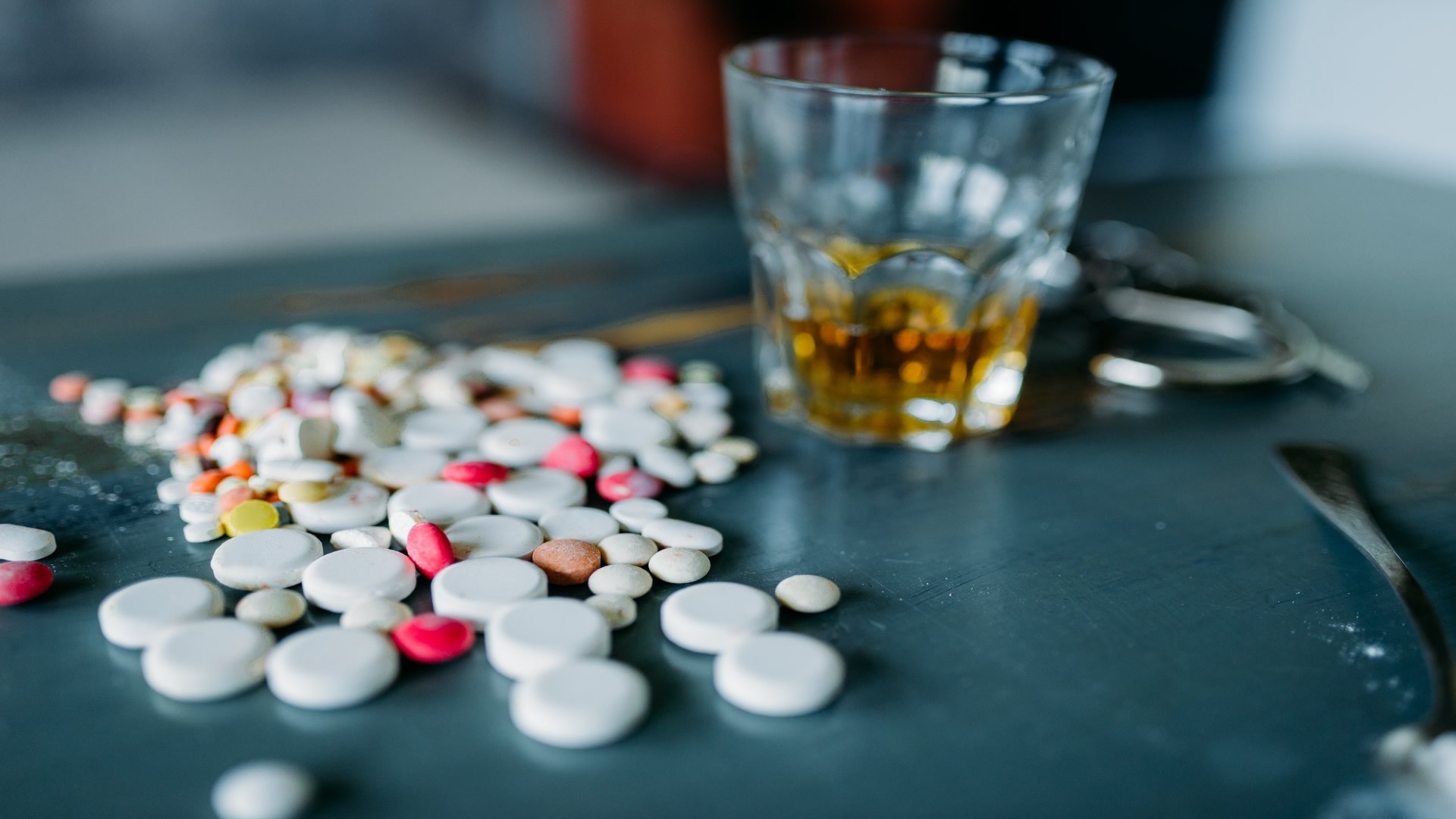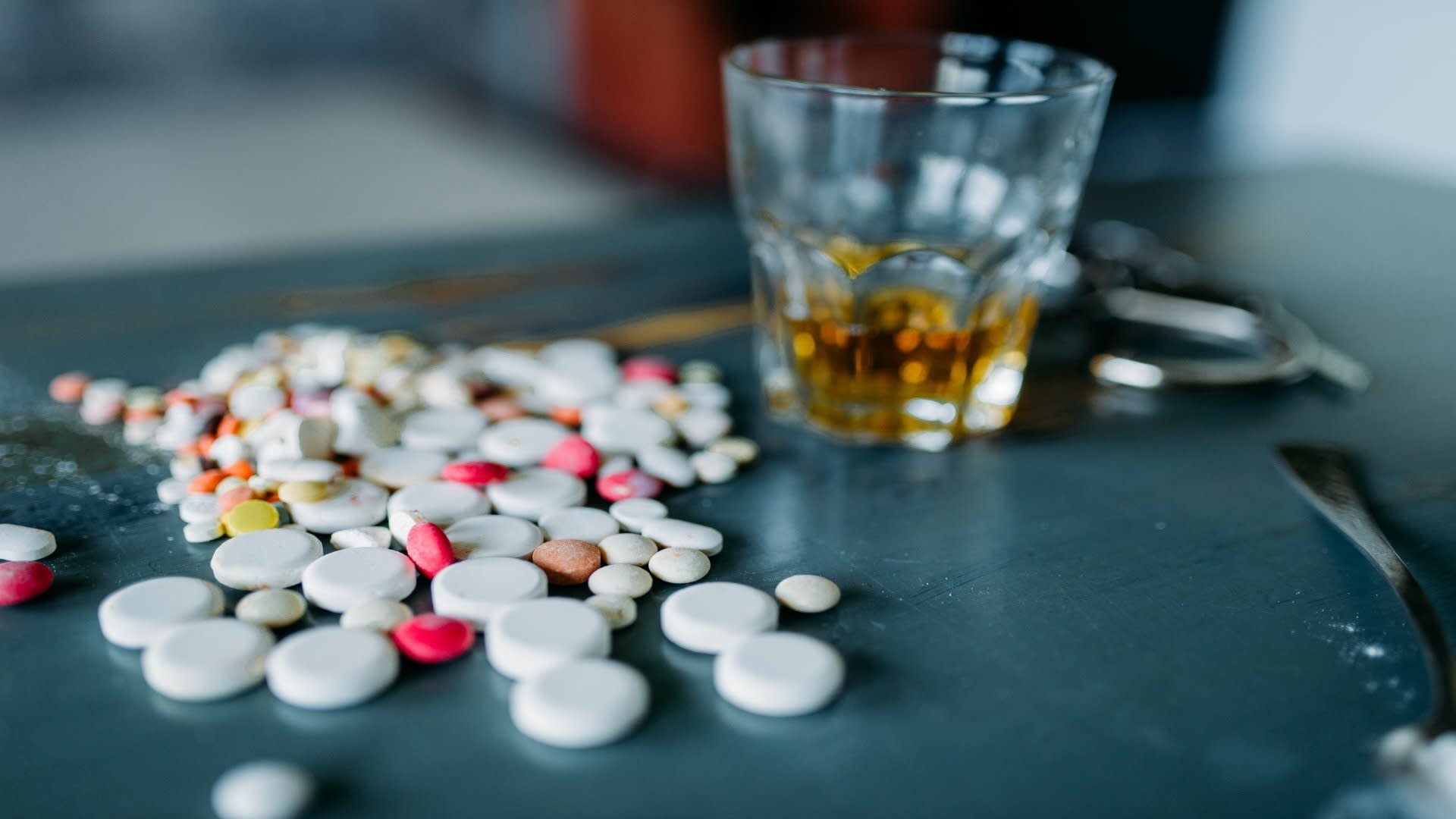Drug and Alcohol
Understanding How Oxycodone Works

Discover how oxycodone works, its effects on the brain and body, and why understanding it is essential for effective recovery and overcoming addiction.
Oxycodone, a potent opioid, is often prescribed to manage severe pain, but its potential for addiction is high. Understanding how oxycodone works is crucial for those dealing with addiction, as it helps demystify the challenges you or your loved ones may face.
We acknowledge the complex recovery journey and aim to provide clarity and support. With compassion and expertise, The Edge Treatment Center offers a dedicated path to recovery, helping individuals overcome addiction. We strive to empower you with knowledge and support on the road to a healthier, addiction-free life.
The Science Behind How Oxycodone Works

Oxycodone, a semi-synthetic opioid, is designed to relieve severe and chronic pain. Its effectiveness stems from its interaction with the brain and central nervous system.
Exploring its pharmacological effects, including receptor binding and physiological impact, is essential to understanding how oxycodone works.
Interaction with Opioid Receptors
Oxycodone primarily binds to mu-opioid receptors in the brain, key components in the body’s pain response. When activated, these receptors significantly reduce pain perception, often producing a sense of euphoria.
This effect occurs as oxycodone interrupts pain signals and stimulates the release of dopamine, creating pleasurable sensations. While this response aids short-term pain relief, it also contributes to addiction by reinforcing the brain’s association of oxycodone with pleasure.
Impact of Oxycodone on the Brain and Body
Understanding how oxycodone affects both the brain and body is critical to comprehending addiction and the recovery process.
Effects on the Brain
Neurotransmitter Interaction: Oxycodone binds to mu-opioid receptors, triggering the release of dopamine and other neurotransmitters associated with pleasure and reward.
Altered Brain Chemistry: Continued use disrupts the balance of neurotransmitters, leading to dependency and disturbances in mood or cognition.
Brain Receptor Changes: Prolonged receptor stimulation leads to increased tolerance, necessitating higher doses to achieve the same effect.
Dependency Mechanism: Over time, the brain’s ability to regulate emotions and sensory perception declines, fostering physical and psychological dependence.
Physical Consequences
Organ Damage: Prolonged use can harm the liver and kidneys due to the body’s effort to metabolize the drug.
Changes in Pain Perception: Withdrawal can increase sensitivity to pain as the body re-adjusts.
Respiratory Impact: High doses can suppress respiration, potentially causing life-threatening complications.
Digestive Effects: Common side effects include constipation and other gastrointestinal discomfort.
Overall Health Decline: Long-term use weakens the immune system, increasing susceptibility to infections.
Understanding these effects is essential for developing effective, comprehensive treatment plans that address both the mental and physical facets of addiction.

We’re Here To Help You Find Your Way
Would you like more information about mental health or drug addiction? Reach out today.
Recognizing Signs of Oxycodone Addiction
Early detection of oxycodone addiction can lead to timely intervention and recovery support. This section outlines key physical and behavioral symptoms.
Physical Symptoms
Changes in Appearance: Sudden weight fluctuations, poor hygiene, or a disheveled appearance.
Health Issues: Chronic fatigue, disrupted sleep patterns, nausea, or headaches.
Pupil Changes: Constricted pupils are a common sign of opioid use.
Frequent Illness: Recurring infections or flu-like symptoms due to a weakened immune system.
Track Marks or Bruising: May occur if the drug is injected rather than taken orally.
Behavioral Changes
Secrecy and Lying: Hiding substance use, lying about activities or whereabouts.
Mood Swings: Irritability, aggression, depression, or emotional instability.
Social Withdrawal: Isolation from family and friends; loss of interest in hobbies or activities.
Neglected Responsibilities: Poor performance at work or school, or ignoring family duties.
Financial Issues: Unexplained money problems, borrowing frequently, or stealing to fund the addiction.
Recognizing these signs early can help individuals and families take steps toward seeking professional help.
The Road to Recovery: Treatment Options
Overcoming oxycodone addiction involves medical, psychological, and holistic approaches tailored to the individual’s needs.
Medical Interventions
Medications for Withdrawal: Methadone, buprenorphine, or naltrexone can ease withdrawal and reduce cravings.
Detox Programs: Medically supervised inpatient or outpatient detox ensures safety during withdrawal.
Medication-Assisted Treatment (MAT): Combines long-term medication use with counseling and behavioral therapy.
Ongoing Medical Care: Regular monitoring addresses health complications throughout recovery.
Therapeutic Approaches

Cognitive Behavioral Therapy (CBT): Helps individuals identify and change harmful thoughts and behaviors.
Motivational Interviewing: Encourages self-motivation and commitment to sobriety.
Family Therapy: Strengthens support systems by involving the family in the recovery process.
Individual Counseling: Offers personalized strategies to manage triggers and maintain abstinence.
Support Groups
12-Step Programs: Structured peer-support programs, such as Narcotics Anonymous (NA).
Peer Support Groups: Community-led meetings for shared experiences and mutual encouragement.
Online Recovery Communities: Digital platforms offering 24/7 support and resources.
Holistic Treatments
Mindfulness and Meditation: Enhance Self-Awareness and Reduce Anxiety.
Yoga and Exercise: Improve mood and physical health while reducing stress.
Nutritional Counseling: Focuses on rebuilding health through a balanced diet and proper nutrition.
Art and Music Therapy: Creative outlets that foster emotional expression and healing.
Exploring multiple treatment avenues helps individuals create personalized recovery plans that are more effective and sustainable.

We’ll Lead You to New Heights
Do you have more questions about mental health or drug addiction? Reach out.
Understanding Oxycodone Withdrawal Symptoms
Withdrawal from oxycodone can be a challenging and uncomfortable experience, especially for individuals who have used the drug regularly or in high doses.
As the body becomes dependent on oxycodone to function normally, stopping or reducing intake can trigger a range of physical and psychological symptoms. These withdrawal symptoms typically begin within 6 to 12 hours after the last dose and may peak within 72 hours.
Common physical symptoms include muscle aches, sweating, nausea, vomiting, diarrhea, chills, a runny nose, and insomnia. Individuals may also experience rapid heartbeat, high blood pressure, and dilated pupils. These symptoms resemble a severe flu, but the intensity can be much more debilitating.
Psychologically, withdrawal may cause anxiety, depression, irritability, mood swings, and intense drug cravings. The emotional distress combined with physical discomfort often leads to relapse if not appropriately managed.
Because withdrawal symptoms can vary in severity depending on factors such as the duration and dosage of oxycodone use, it is recommended to undergo detox under medical supervision.
Medical professionals can provide medications and support to ease symptoms and ensure safety. Recognizing the symptoms and seeking professional help is the first step toward overcoming oxycodone dependence and beginning a successful recovery journey.
Role of The Edge Treatment Center in Addiction Recovery
The Edge Treatment Center is dedicated to guiding individuals through their recovery journey with compassionate and comprehensive care.
Personalized Treatment Plans
Assessment and Diagnosis: Comprehensive evaluations to understand addiction history and mental health.
Customized Plans: Tailored strategies combining medical and therapeutic methods.
Progress Monitoring: Regular reviews ensure treatment aligns with progress and evolving needs.
Long-Term Strategies: Emphasize relapse prevention and maintaining sustainable sobriety.
Comprehensive Care Services
Therapy and Counseling: Includes CBT, family therapy, and individual counseling.
Support Groups: Encourage connection and mutual support through guided group sessions.
Medical Supervision: Ensures safety, particularly during detox and medication-assisted treatment.
Educational Workshops: Provides information on addiction, recovery techniques, and coping skills.
Supportive Environment
Safe Spaces: Comfortable, judgment-free facilities conducive to healing.
Community Building: Fosters connection among individuals on similar recovery paths.
Experienced Staff: Dedicated professionals offering consistent guidance and support.
Aftercare Planning: Structured post-treatment strategies to maintain sobriety and handle challenges independently.
The Edge Treatment Center's personalized, holistic approach empowers individuals to reclaim their lives and achieve lasting recovery.

We’re Here To Help You Find Your Way
Do you need advice about mental health or drug addiction? Reach out today.
Oxycodone Addiction Challenges? We're Here to Help

Facing the challenges of oxycodone addiction can be overwhelming, but you don't have to navigate them alone. At The Edge Treatment Center, we are committed to helping you regain control of your life through personalized treatment plans tailored to your individual needs.
Our comprehensive approach, encompassing medical interventions, therapeutic support, and a nurturing environment, sets the stage for effective and lasting recovery. With our team of experienced professionals, you can overcome addiction and work toward a healthier, more fulfilling future. Don’t let addiction define your life—reach out to us today and take the first step toward healing and recovery. Let us support you on your journey to a better life.

We’re Here To Help You Find Your Way
If you or a loved one is struggling with addiction, there is hope. Our team can guide you on your journey to recovery. Call us today.
Written by
The Edge Treatment Center
Reviewed by
 Jeremy Arzt
Jeremy ArztChief Clinical Officer
Drug and Alcohol
June 30, 2025
FAQ
Frequently Asked Questions
Oxycodone is an opioid painkiller that provides fast relief, while OxyContin is a brand-name, extended-release version of oxycodone. OxyContin delivers the drug gradually over several hours, offering longer-lasting pain management, which increases its potential for misuse if not used as prescribed.
The Edge Treatment Center actively involves families through therapy, education, and support. We help rebuild trust, improve communication, and provide families with tools to support their loved ones. Family participation is crucial in creating a stable and supportive environment that fosters lasting recovery and healing.
Yes, lifestyle changes play a vital role in recovery. Regular exercise, healthy eating, quality sleep, and mindfulness practices such as meditation improve physical health and emotional stability. These habits enhance well-being and strengthen the body and mind against cravings and relapse triggers.
During detox, medical professionals supervise the process to manage withdrawal symptoms safely. Medications may ease discomfort, and emotional support is provided throughout. This stage prepares individuals physically and mentally for the next steps in comprehensive addiction treatment and long-term recovery.
Ongoing therapy is crucial because it addresses emotional triggers, past trauma, and underlying issues contributing to addiction. It helps individuals develop healthy coping skills, avoid relapse, and stay motivated. Continuous therapeutic support promotes long-term success and emotional growth throughout the recovery journey.











